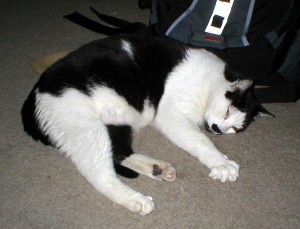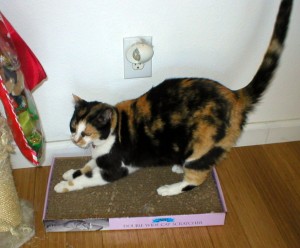![]()
![]()
![]()
![]()
![]()
jānte
a feeling of happiness. Happiness in this case is defined as “something good is happening or has happened in the recent past; thinking about this, I feel something good.” This definition, as well as many of the ones coming up, is based on some of Anna Wierzbicka‘s work*.
![]()
![]()
![]()
![]()
![]()
![]()
anānte
When modifying a person, this means that the person seems to be feeling happiness, so, la sāen mānte “She is happy.” When modifying an object or event, it means that the object or event is inducing or can induce happiness in a person. anānte can also be used in the clause-level modifier phrase ānen anānte which means “happily” or “with happiness”. So, ni sāen rātāsa ānen anānte “She went to the market happily” implies that she was happy when she went to the market.
*This paper is a good introduction.

